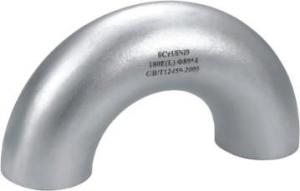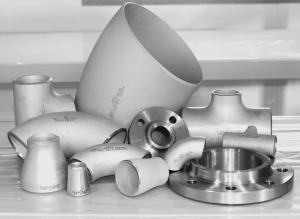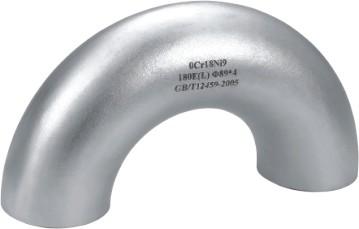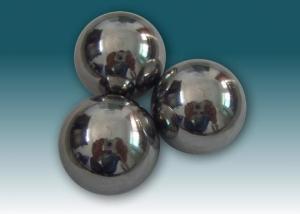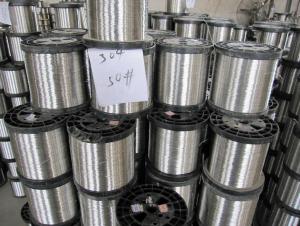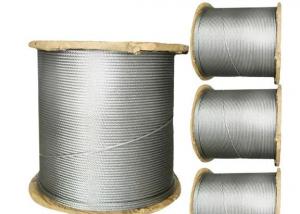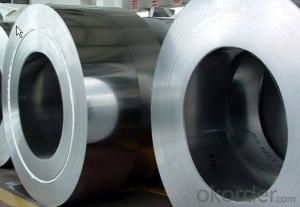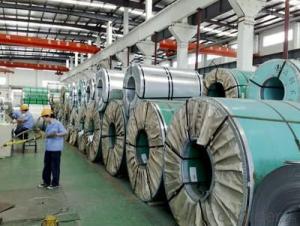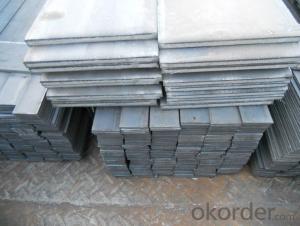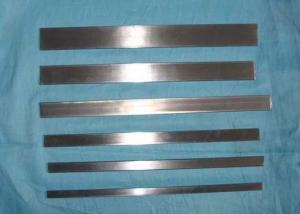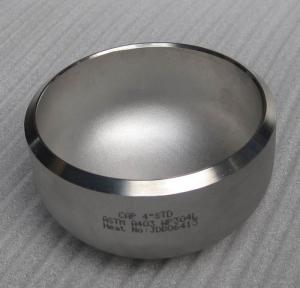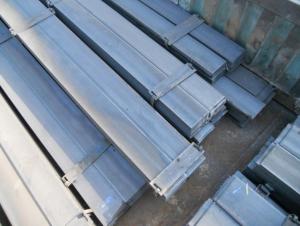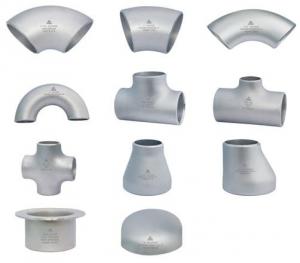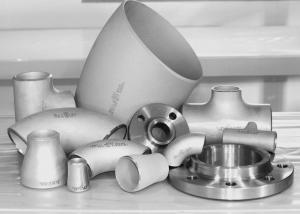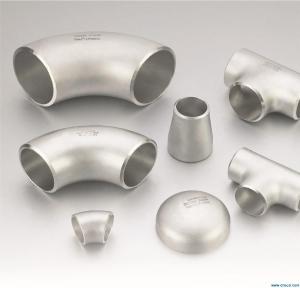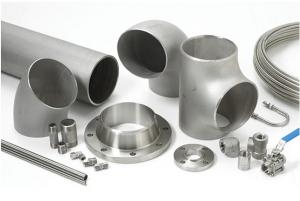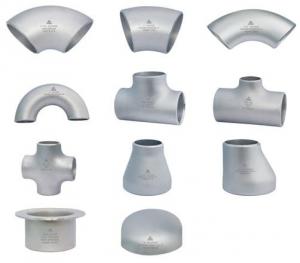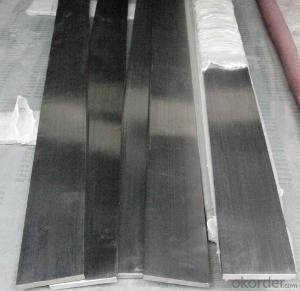Stainless Steel Cross
- Loading Port:
- China Main Port
- Payment Terms:
- TT or LC
- Min Order Qty:
- 5 Pieces pc
- Supply Capability:
- 10000 Pieces Per Month pc/month
OKorder Service Pledge
OKorder Financial Service
You Might Also Like
Stainless Steel Fittings
Specifications Features:
1) Carbon steel fitting and stainless steel fitting
2) Standard: ASME, ANSI, API, JIS
1. BUTT WELDED FITTING:
2. Production acc. to the standard of GB /ASTM / ASME / DIN / JIS
ASTM B 16.9 /16.11 B 16.28 JIS B 2311/2220 DIN2617/2616/2615/2391
3. Types: Elbows, seamless and welded, LR & SR ,Bend -Equal and reducing Tees,
seamless and welded - Concentric and eccentric Reducers,seamless and welded -Caps
4. Wall thickness: From Sch5 up to Sch160/STD/XS/XXS
5. Material Grades: A403,WP304, WP304L, Wp316, WP316L, A234WPB
6. Dimensions: Seamless: from 1/2' up to 24'
7. size: From 1/2" up to 72"
Outer packing:Seaworthy plywood case
|
Grade |
TP304,TP304L,TP321,TP316L,TP310S etc. |
|
connection |
welding |
|
techniques |
forged |
|
Surface finishing |
180/240/320/400 grit |
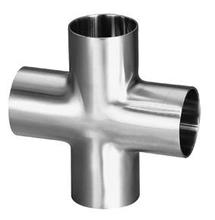
- Q: Are stainless steel flats heat resistant?
- Indeed, stainless steel flats possess the quality of being resistant to heat. This is because stainless steel is a specific kind of steel alloy that boasts a considerable quantity of chromium, thus granting it its remarkable ability to resist corrosion. Furthermore, stainless steel exhibits exceptional heat resistance, rendering it suitable for diverse applications within industries like construction, automotive, and manufacturing. Stainless steel flats have the capability to endure high temperatures without experiencing any deformation or compromising their structural integrity. This heat resistance attribute is particularly significant in environments where the material is exposed to intense heat or abrupt temperature fluctuations, such as in ovens, furnaces, and industrial equipment. All in all, stainless steel flats emerge as an exceedingly dependable option in terms of heat resistance.
- Q: Can stainless steel flats be used in power generation plants?
- Stainless steel flats, due to their excellent corrosion resistance, high strength, and durability, are widely used in power generation plants. Various components and equipment in these plants, such as heat exchangers, condensers, turbine blades, boiler tubes, and piping systems, can benefit from the use of stainless steel flats. Given the harsh conditions these components are exposed to, including high temperatures, pressure, and corrosive environments, stainless steel is an ideal material choice. It offers resistance to corrosion caused by factors like moisture, heat, chemicals, and gases, ensuring the longevity and reliability of the components. This reduces the need for frequent replacements and maintenance. In addition to corrosion resistance, stainless steel flats possess high strength, enabling them to withstand the extreme conditions found in power generation plants. They can resist mechanical stress, pressure, and thermal cycling without deforming or compromising their structural integrity. This strength is crucial for ensuring the safety and efficiency of power generation equipment. Moreover, stainless steel flats are easy to clean and maintain, which is essential in power generation plants to prevent contamination and ensure optimal performance. They can be easily sterilized and inhibit the growth of bacteria, making them suitable for applications in steam turbines and other critical components. Overall, stainless steel flats offer versatility and reliability, making them a preferred material choice for power generation plants. Their corrosion resistance, strength, durability, and ease of maintenance contribute to their suitability in these demanding environments.
- Q: How do I calculate the moment of inertia for a stainless steel flat with holes?
- To calculate the moment of inertia for a stainless steel flat with holes, you need to consider the individual moments of inertia for each component (solid regions and holes) and then sum them up. The moment of inertia for a solid region can be calculated using standard formulas based on its shape (e.g., rectangular, circular, etc.). For the holes, subtract their individual moments of inertia from the total moment of inertia of the flat. Finally, sum up the moments of inertia for all the components to get the overall moment of inertia for the stainless steel flat with holes.
- Q: Are stainless steel flats resistant to chemicals?
- Yes, stainless steel flats are highly resistant to a wide range of chemicals.
- Q: What are the applications of stainless steel flat?
- Stainless steel flat has numerous applications in various industries. It is commonly used in construction for structural components, such as beams and columns. It is also widely utilized in the automotive industry for manufacturing parts like exhaust systems, brackets, and frames. In addition, stainless steel flat finds its use in the food and beverage sector for creating equipment like countertops, sinks, and storage tanks due to its corrosion resistance. Moreover, it is employed in the aerospace industry for making aircraft components due to its high strength-to-weight ratio. The medical field also benefits from stainless steel flat in the production of surgical instruments and implants due to its biocompatibility and sterilization capabilities. Overall, the applications of stainless steel flat are extensive and diverse, thanks to its durability, corrosion resistance, and versatility.
- Q: How do stainless steel flats perform in seawater environments?
- Stainless steel flats possess remarkable resistance against corrosion and excel in marine settings. This is due to the chromium content in stainless steel, which creates a protective oxide layer on the surface. This layer acts as a barrier against corrosive elements such as salt, moisture, and chloride ions present in seawater, preventing direct contact with the metal and inhibiting corrosion. Because of their corrosion resistance, stainless steel flats are extensively utilized in various marine applications like shipbuilding, offshore structures, and seawater desalination plants. They can endure continuous exposure to saltwater, waves, and harsh weather conditions, ensuring long-lasting durability and structural integrity. Furthermore, stainless steel flats maintain their mechanical properties and strength even in seawater environments. This makes them suitable for applications that require both high strength and corrosion resistance. It should be noted that the performance of stainless steel flats in seawater environments may vary depending on the specific grade and alloy composition. Austenitic stainless steels, such as grades 304 and 316, are especially favored due to their exceptional corrosion resistance properties. These grades contain higher amounts of chromium and nickel, which enhance their resistance to corrosion and pitting in seawater. In conclusion, stainless steel flats exhibit outstanding performance in seawater environments. Their corrosion resistance, durability, and mechanical properties make them an excellent choice for a wide range of marine applications, guaranteeing reliable and long-lasting performance in harsh seawater conditions.
- Q: Can stainless steel flats be used in food storage containers?
- Indeed, food storage containers can utilize stainless steel flats. The utilization of stainless steel in food storage containers is widespread owing to its robustness, ability to resist corrosion, and non-reactive nature towards food. Its non-porous characteristic ensures that it does not absorb any odors or flavors from the stored food. Furthermore, stainless steel is effortlessly cleanable and maintainable, making it an ideal choice in terms of hygiene for food storage containers. Nevertheless, it is crucial to verify that the stainless steel employed in such containers is of food-grade quality and meets all the required safety standards.
- Q: How do stainless steel flats resist magnetization?
- The resistance of stainless steel flats to magnetization is attributed to the unique properties of the material. Stainless steel, unlike other steel types, contains a significant amount of chromium, which forms a protective layer on the metal's surface. This layer, known as the passive film, acts as a barrier against external elements, including magnetic fields. To create the passive film, stainless steel undergoes a process called passivation, which entails the formation of a thin oxide layer on its surface. This layer exhibits exceptional resistance to corrosion and grants stainless steel its durability and resistance to magnetization. Moreover, stainless steel incorporates other alloying elements, such as nickel and molybdenum, which further enhance its resistance to magnetization. These elements serve to stabilize the steel's structure and prevent the alignment of magnetic domains, a prerequisite for magnetization to occur. The grain structure of stainless steel also contributes significantly to its resistance to magnetization. Typically, stainless steel flats are fabricated through cold rolling, a process that involves compressing the metal at room temperature. This procedure results in a fine-grained structure that impedes the movement of magnetic domains, rendering magnetization difficult. In conclusion, stainless steel flats resist magnetization due to the presence of a protective passive film, alloying elements, and a fine-grained structure. These factors synergistically prevent the alignment of magnetic domains, ensuring that stainless steel remains non-magnetic. Consequently, stainless steel serves as an ideal material for numerous applications where magnetism is undesirable.
- Q: Are stainless steel flats resistant to UV rays?
- Yes, stainless steel flats are generally resistant to UV rays. Stainless steel is known for its excellent corrosion resistance, and this includes its resistance to the damaging effects of UV rays. UV rays can cause discoloration, fading, and degradation of many materials, but stainless steel is highly resistant to these effects. This is because stainless steel contains chromium, which forms a protective oxide layer on its surface, preventing UV rays from penetrating and causing damage. Therefore, stainless steel flats can be used in outdoor applications and environments with prolonged exposure to sunlight without significant degradation or loss of performance.
- Q: What is the fatigue limit of stainless steel flats?
- The fatigue limit of stainless steel flats refers to the maximum stress level that the material can withstand without experiencing fatigue failure, meaning it can endure an infinite number of cycles at that stress level without breaking. The fatigue limit of stainless steel flats varies depending on the specific grade and surface conditions, but it is generally higher than that of other materials, making stainless steel a preferred choice for applications requiring high fatigue strength.
1. Manufacturer Overview
| Location | Zhejiang, China |
| Year Established | 2010 |
| Annual Output Value | above US$16 million |
| Main Markets | East Asia, Middle East. |
| Company Certifications |
2. Manufacturer Certificates
| a) Certification Name | |
| Range | |
| Reference | |
| Validity Period |
3. Manufacturer Capability
| a) Trade Capacity | |
| Nearest Port | Shanghai |
| Export Percentage | |
| No.of Employees in Trade Department | above 10 people |
| Language Spoken: | English, Chinese |
| b) Factory Information | |
| Factory Size: | about 30000 square meter |
| No. of Production Lines | above 7 |
| Contract Manufacturing | OEM Service Offered |
| Product Price Range | Average |
Send your message to us
Stainless Steel Cross
- Loading Port:
- China Main Port
- Payment Terms:
- TT or LC
- Min Order Qty:
- 5 Pieces pc
- Supply Capability:
- 10000 Pieces Per Month pc/month
OKorder Service Pledge
OKorder Financial Service
Similar products
Hot products
Hot Searches
Related keywords
